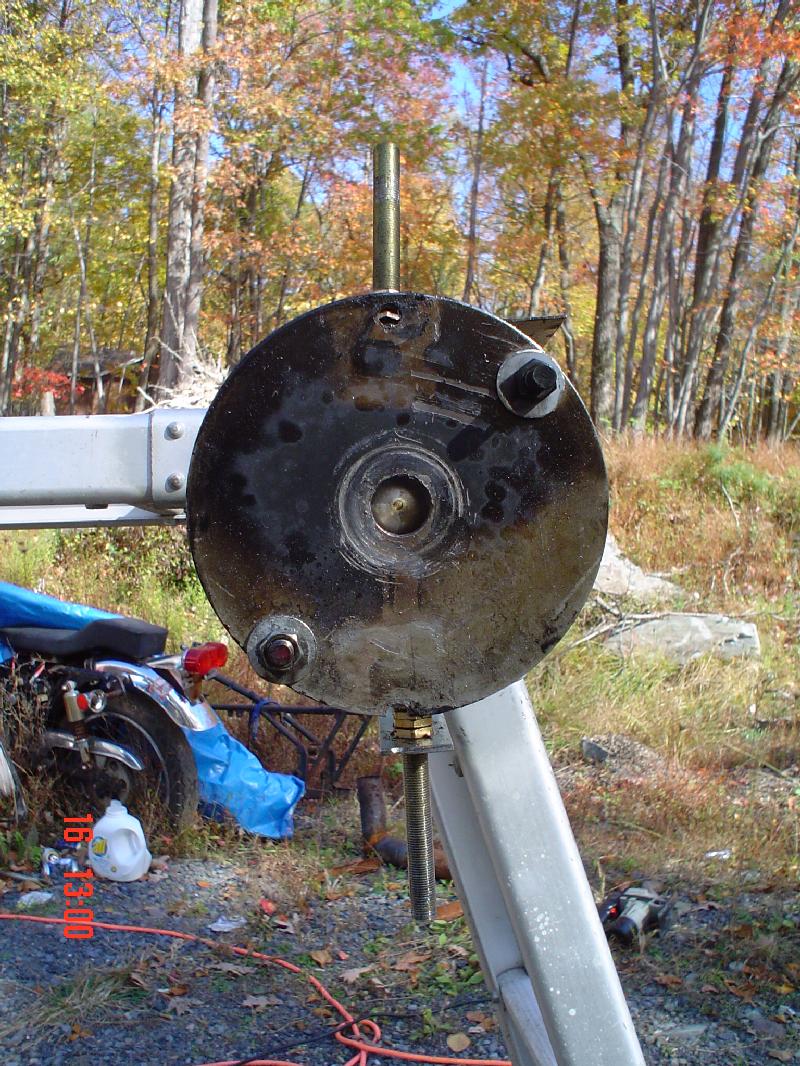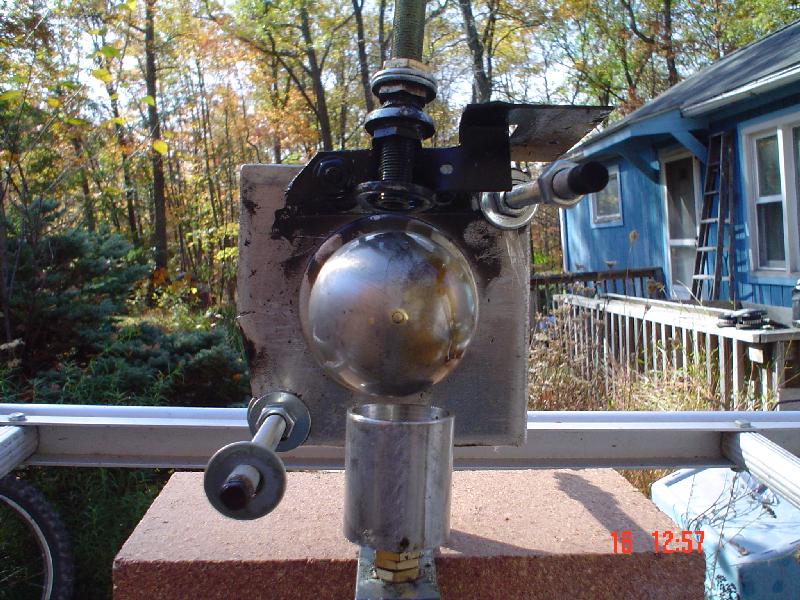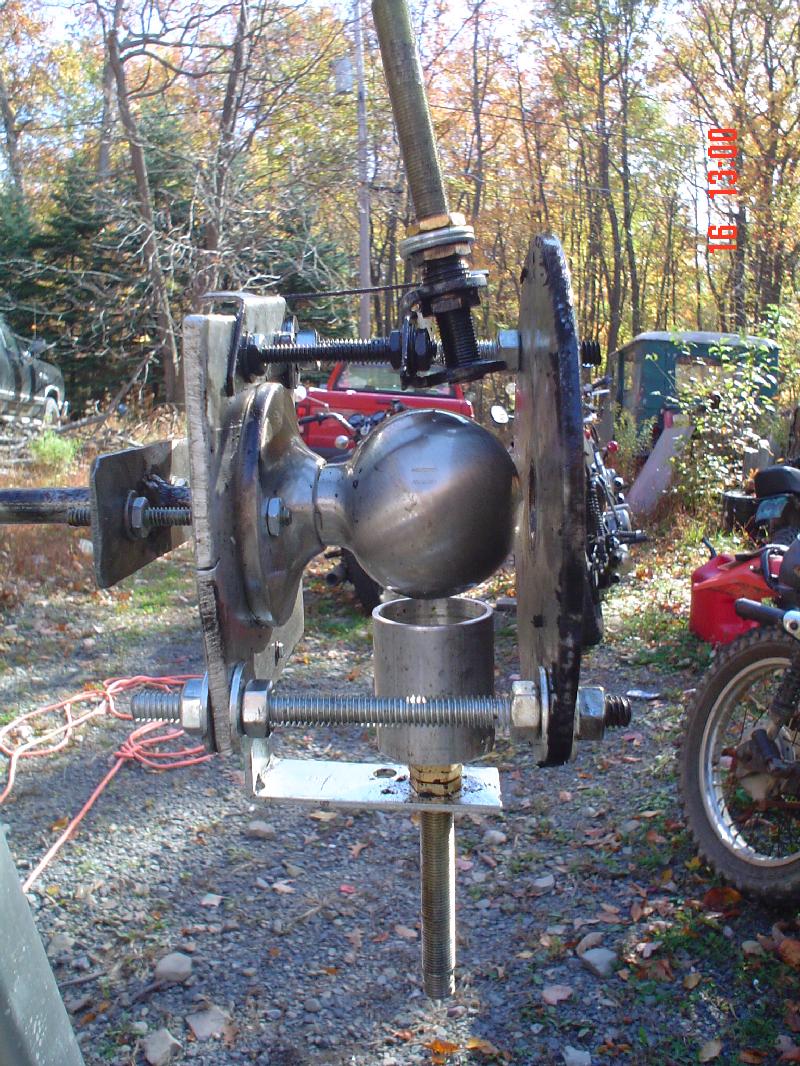Trials, Tribulations, and it just
doesn't work
OR
How NOT to make a Babington burner
and actual plans for a successful implementation.
Background:
First off, let me explain that I am not an environmentalist, nor do I
believe that the planet is doomed because of man's
interference. I'm sure that mother nature will joyfully kick us
off long before the planet is permanently damaged and she'll just start
over again. I'm not a vegan and I'm not an animal rights
activist. I don't go around kicking dogs or cats unless I'm
attacked, but I do feel that humans are at the top of the food chain
(in most places...I'm not going to the places where I'm NOT at the top
of the food chain) and meat is very tasty when cooked properly...well
done is my preference. I drive a 10 year old Dodge Dakota pickup
truck and I ride thousands of miles per year on 30 year old 2 stroke
motorcycles.
What I am is underemployed and 1/2 broke, so I'm always looking for
ways to save money and make a legal buck. If I find a less
expensive solution, then I'm all for it. If it can keep the oil
companies from getting some of my hard earned dollars, then I'm even
more for it. For the past several years, I have been heating my
house with coal and heating my garage/workshop with oil. Last
winter, heating oil prices got completely out of hand and I was unable
to afford to adequately heat my garage. To top it off, the
furnace in my garage broke and unless it's actually running, it's
dumping fuel onto the floor if I don't turn off the oil supply.
So I started searching the internet for alternative solutions. I
found a few plans and ideas for waste oil heaters. Supposedly,
these heaters will work off of pretty much anything liquid that
is flammable. Sounded good to me, so I started
experimenting. Fortunately, for me, I have a mechanical
background and some machine tools in my garage (lathe and mill) so
making my own parts was fairly simple. I also have access to a
good supply of waste oil.
Dilemma:
Anyway, after searching the 'net, I came across something called a
Babington burner. This is a very simple device that uses
compressed air to vaporize oil so it can be ignited in a tube. It
requires a ball with a tiny hole drilled through it to work. The
oil is dribbled onto the ball and because of the shape, oil is evenly
spread across the whole assembly with the excess being caught and
recirculated. Sounds like a great idea, but I have no way of
making a ball or drilling a .010" hole with my equipment. A
little more searching and I found a discussion about using a grooved
cone instead. Better. I can make a cone with my equipment,
but I still can't drill a .010" hole.
Solution:
I took several ideas and plans from various websites and messageboards
on the Internet and looked at them from a mechanic's view. I took
what I felt were the best ideas and the easiest ideas. They may
not be the most efficient, but they are the most workable for the
skills and equipment that I have at my disposal. Anyway, I came
up with a waste oil burner that should have worked well and is fairly
simple
to construct using a few pieces of scrap metal. Since I work at a
motorcycle shop and we have to pay to get our waste oil removed, I can
get almost an unlimited supply for free.
First, the nozzle. I took a piece of 3/4 inch aluminum stock,
tapered one end and drilled it lengthwise for a 5mm x .8 thread.
This is because since I don't have the ability to drill a .010" hole, I
decided to use a Mikuni motorcycle carburetor pilot jet as my
orifice. I then drilled and threaded the other end for an air
hose male coupler fitting. That is a 1/4" NPT fitting
available at any hardware store. I then cut a groove in the
tapered end to guide the oil across the end of the carb jet.
Nozzle is finished.

Here it is installed in a 3 inch diameter stovepipe.

Too bad it didn't work. Fuel flow was so critical that if there
was not enough flow, it went out from a lack of fuel and if there was
too much flow, it simply flooded itself out.
Time for a re-think and a re-design. I took another look at John
Archibald's and Dave Brown's designs and figured out how to implement
the ball. I went to the hardware store
and purchased a dummy doorknob. Since I still didn't have a way
to drill a .010 hole, I kept with the idea of using a carb jet as the
orifice. Here is a line drawing of what I designed.

Forgive the crudity of the drawing. I'm not too good with MS
Paint. :(
Here are a few pictures of what the assembled Babington burner nozzle
looks like. Your results may vary somewhat.



So, now that I have a functional Babington ball. I had
flame. I just have to make it actually function as a self
sustaining burner. I tried everything to make this work.
The pictures show the final Babington ball assembly. Originally I
didn't have a plate in FRONT of the ball. The lack of the plate
caused me no end of trouble. I couldn't get it to maintain a
burn if there was any kind of wind blowing across the chimney or end of
the burner tube. I tired everything I could think of and
everything that I
could read. Longer burn tube...didn't work. No
chimney...didn't work. Higher pressure...didn't work. Lower
pressure...didn't work. Higher fuel flow...didn't work.
More kerosene...didn't work. Preheating the oil...caused even
more problems. Etc. Finally, I re-read all of Dave
Brown's advice and put a plate in front of the ball inside the tube to
restrict the
airflow. It worked like a champ. Now I had a working
design and tried preheating again to reduce the amount of kerosene I
needed to add to the oil. It didn't work. My oil
comes from a motorcycle
shop. It has regular dead dinosaur oil, synthetic oil, and a
small amount of anti-freeze in it. Preheating just boiled out any
water and caused bubbles in the fuel delivery.
No matter what I tried as an improvement, it wouldn't sustain a burn or
at worst, it wouldn't even light off. Every time I went back to
the very basics and followed John Archibald's and Dave Brown's advice,
it worked. So much for improvements. Other than the
addition of the plate in front of the ball, I made NO changes to the
Babington ball itself. Now that I have hindsight as to the design
and functioning of the system, I have but one thing to say about it...
The Babington burner is about as complicated as a stick!!!!!
Keep it nice and simple and it works very well.
Here is my method of operation.
Since my source of oil varies in viscosity, I've found that if I thin
the waste motor oil with kerosene, I get the best results. I thin
the oil until it gets the approximate viscosity of straight diesel
fuel. I'm not very scientific about the mix. I just look at
the way it flows. A little off one way or the other doesn't
matter. Depending on my waste oil, I have to add between 20% and
50% kerosene. I got a gallon of drain oil from my neighbor during
one of my tests.
His wife went 30,000 miles on an oil change and it had the consistancy
of 90 wt gear oil. I had to cut it 50/50
before it would flow enough to burn. One thing that I have
noticed, is that when the burner is hot, I can top off the oil tank
with straight oil and it seems to work just fine. However, when the
system is cold, the oil needs to be thinned.
So, to start the burner, I make sure that my source tank has oil of the
proper viscosity. I start the pump and once it's flowing
smoothly, I turn on the air pressure. I then light my propane
torch and light the burner. I have to hold the torch flame in the
fuel stream for a few seconds and then the burner is self sustaining.
Back
How to build your
own Babington





